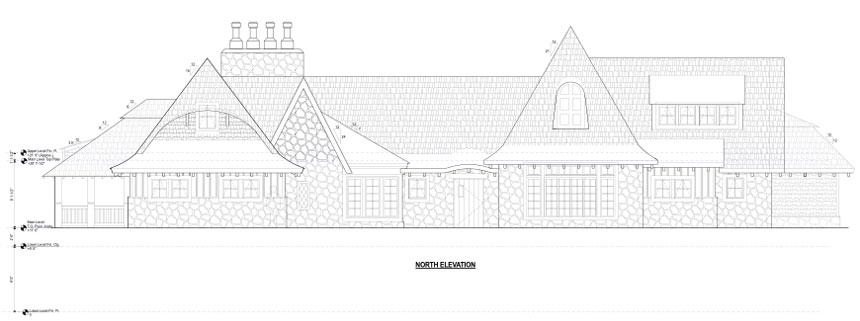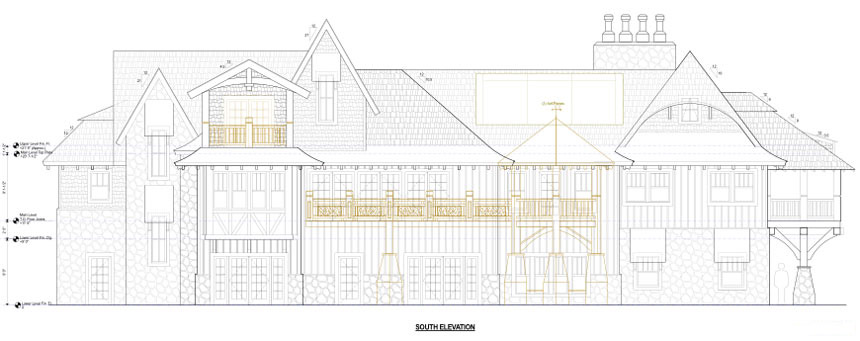On the Boards
94 Webb Cove Road
After discussing their substantial social and functional requirements, it was clear that my clients were looking forward to a generously proportioned home. Fortunately, they shared a vision that their home would be resource efficient and consequently receptive to incorporating innovative design solutions, construction techniques and energy-saving systems to minimize their home’s carbon footprint.
A cost/benefit analysis of the exterior wall systems available in the marketplace was initially done, keeping in mind healthy and sustainable materials. We agreed that an insulated concrete form system (ICF) would create an extremely tight and well insulated exterior envelope. A thermal radiant floor system was specified to heat the living areas with sustainable energy provided by solar vacuum tube collection panels. Supplemental heat and air as well as energy to heat the swimming pool and spa were augmented through an underground geo-thermal system. Since the exterior of the house was designed so tightly, an energy recovery ventilation system (ERV) was specified to assure a healthy interior environment. Underground rainwater recovery tanks are built into the home’s drainage system for irrigating the landscape and in turn will conserve municipal water consumption.
Passive solar design solutions included designing graceful deep overhangs that shield the sun’s direct rays during the summer yet allow the lower winter rays to penetrate the interior for passive solar heat. Reclaimed wood, acid washed concrete floors, poplar bark siding and natural stone also contribute to minimizing the homes carbon-footprint.

Systems Engineered Quadraplex Complex
A respected local realtor, Byron Greiner, asked me to explore the benefits and potential design possibilities of systems engineered homes; sometimes called prefabricated homes.
Systems engineering is defined in the building industry as building components which are fabricated in sections, or boxes. The components are factory built in a climate-controlled environment; thus eliminating the potential damaging weather condition affects of site built homes. These homes are energy efficient, they are manufactured with very high quality control standards, are structurally sound and usually less expensive than site-built homes due to the efficiencies of fabricating on an assembly line. In addition, because of the engineering involved in producing the home in a factory, there is a minimal amount of wasted materials. If you have spent time on a construction site, you will appreciate this aspect by the amount of dumpsters required to carry off waste materials. The components are then delivered on a truck bed so the width of each is limited to 14 feet. Even though we strive to achieve efficient and sustainable building models and practices, this building system has not caught on yet in most of our regions; although in Europe and Asia, it’s widely used.
I enjoyed this challenge and designed a prototype for a quadraplex residential complex incorporating the size restrictions yet creating homes that reflect a functional and seamless plan; consequently not revealing the component restrictions. Another aspect of the project was to create an appealing exterior design in order to dispel the typical myths and expectations of prefabricated housing.







